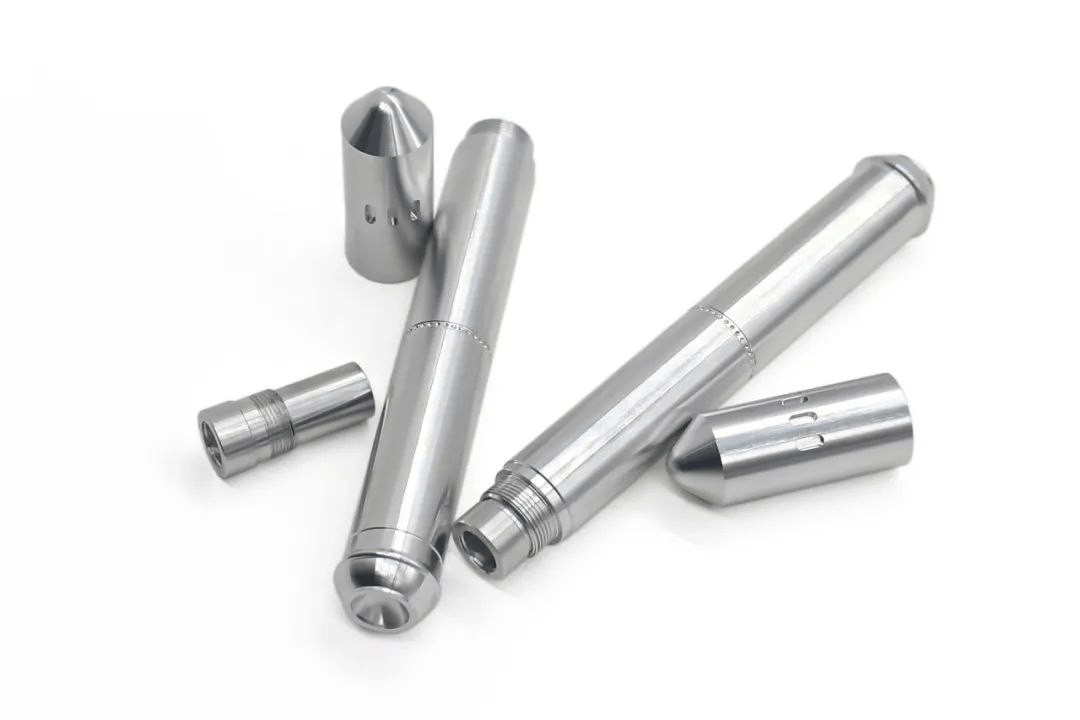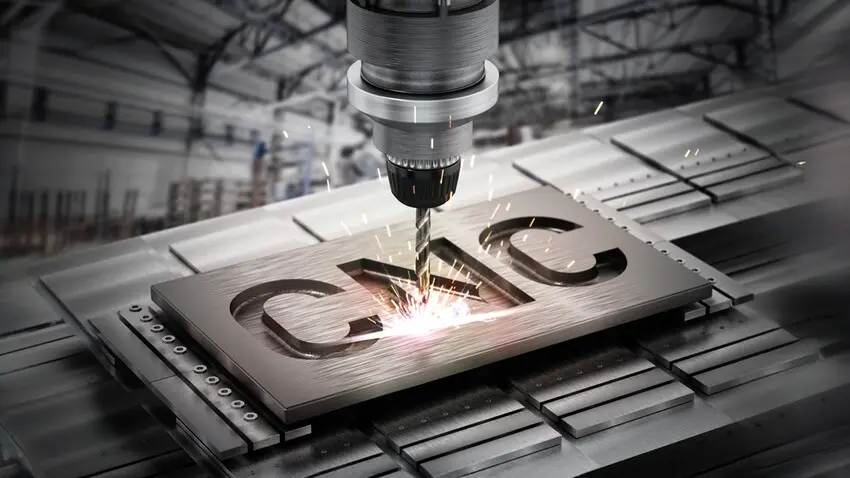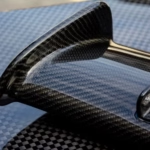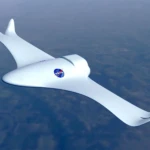Revolutionizing CNC Product Manufacturing: Streamlining Process Chains for Enhanced Efficiency and Precision
In the ever-evolving landscape of manufacturing, the pursuit of efficiency and precision remains a constant driving force. As we delve into the world of Computer Numerical Control (CNC) machining, we find ourselves at the cusp of a new era—one where traditional boundaries are being pushed, and innovative solutions are reshaping the industry. This comprehensive guide explores the cutting-edge strategies and technologies that are transforming CNC product manufacturing, with a particular focus on shortening process chains and optimizing production workflows.
The Evolution of CNC Product Manufacturing
The Challenge of Complexity
As products become increasingly sophisticated, particularly in high-tech industries like aerospace, manufacturers face a growing challenge:
- Multiple varieties of parts
- Small batch sizes
- Complex processes
- Prevalence of thin-walled structures
- Difficult-to-machine materials
These factors often lead to:
- Extended manufacturing cycles
- Substantial material waste
- Low processing efficiency
- Significant processing deformations

The Quest for Innovation
To address these challenges, industry professionals have been tirelessly seeking more efficient and precise processing methods. Their efforts have led to the development of groundbreaking technologies and techniques that are reshaping the CNC manufacturing landscape.
The Rise of Composite Processing
One of the most promising developments in recent years has been the emergence of composite processing technologies. Let’s explore this concept in depth.
What is Composite Processing?
Composite processing refers to technologies that can complete different processes or utilize different processing methods on a single piece of equipment. This approach manifests in two primary forms:
- Energy or Movement-Based Composites: These combine different processing methods based on the energy or movement patterns used.
- Process Concentration Composites: These focus on combining mechanical processing technologies to increase efficiency.
Turning and Milling: A Powerful Combination
Among the various composite processing techniques, turning and milling combined processing has seen rapid development and adoption, particularly in the aerospace industry.
Why Turning and Milling?
The combination of turning and milling operations on a single machine offers several significant advantages:
- Versatility: Ability to handle a wide range of part geometries
- Precision: Improved accuracy due to reduced part handling
- Efficiency: Shortened overall processing time
The Impact on Aerospace Manufacturing
The aerospace industry, with its demanding requirements for precision and performance, has been at the forefront of adopting turning and milling composite processing. Let’s examine how this technology addresses the unique challenges of aerospace part production.
Aerospace Part Characteristics
- Multiple varieties
- Small batch sizes
- Complex processes
- Widespread use of thin-walled structures
- Difficult-to-machine materials (e.g., titanium alloys, high-temperature superalloys)
How Turning and Milling Composites Address These Challenges
- Process Chain Reduction: By combining multiple operations in a single setup, the overall manufacturing process is streamlined.
- Improved Precision: Fewer setups mean less opportunity for cumulative errors.
- Enhanced Efficiency: Reduction in non-cutting time (e.g., tool changes, part transfers) leads to significant time savings.
The Advantages of Turning and Milling Composite Processing
Let’s delve deeper into the specific benefits that make this technology so promising for CNC product manufacturing.
1. Shortened Manufacturing Process Chains
How It Works
- Multiple operations (turning, milling, drilling, etc.) are performed on a single machine.
- Parts can often be completed in one clamping operation.
Benefits
- Reduced production auxiliary time
- Decreased tooling and fixture manufacturing cycles
- Minimized waiting times between operations
Real-World Impact
A case study from an aerospace manufacturer showed a 40% reduction in overall production time for complex turbine components after implementing turning and milling composite processing.
2. Improved Processing Accuracy
Contributing Factors
- Reduced number of clamping operations
- Elimination of error accumulation from multiple setups
- Integration of online detection and measurement systems
Key Features
- High-strength integrated bed designs
- Advanced tool arrangement strategies
- In-process measurement capabilities
Precision Achievements
Some turning and milling composite machines can achieve tolerances as tight as ±0.005mm on complex aerospace components, a level of precision that was previously extremely challenging to maintain consistently.
3. Enhanced Space Utilization and Cost Reduction
Space Efficiency
- Compact machine designs
- Integration of multiple processes in one footprint
Cost Savings
- Reduction in the number of individual machines required
- Decreased need for tooling and fixtures
- Lower maintenance costs due to fewer total machines
Long-Term Financial Impact
While the initial investment in turning and milling composite equipment may be higher, manufacturers often see a return on investment within 18-24 months due to increased productivity and reduced operating costs.
Implementing Turning and Milling Composite Processing: Best Practices
For manufacturers considering the adoption of this technology, here are some key considerations and best practices:
1. Assess Your Production Needs
- Analyze your current process chain
- Identify bottlenecks and inefficiencies
- Determine which parts would benefit most from composite processing
2. Invest in Training
- Ensure operators are well-versed in both turning and milling operations
- Provide comprehensive training on the new composite equipment
- Develop skills in advanced CAM programming for optimized toolpaths
3. Optimize Part Design
- Redesign parts to take full advantage of composite processing capabilities
- Implement Design for Manufacturability (DFM) principles
- Collaborate closely with engineering teams to maximize efficiency
4. Implement Robust Quality Control
- Utilize in-process measurement systems
- Develop comprehensive quality assurance protocols
- Regularly calibrate and maintain equipment for consistent accuracy
5. Embrace Digital Integration
- Implement Industry 4.0 technologies for real-time monitoring
- Utilize data analytics to continually improve processes
- Consider integrating artificial intelligence for predictive maintenance and optimization

The Future of CNC Product Manufacturing
As we look to the horizon, the integration of turning and milling composite processing is just the beginning. The future of CNC product manufacturing holds even more exciting possibilities:
1. Additive-Subtractive Hybrid Machines
Combining 3D printing capabilities with traditional CNC operations for ultimate flexibility.
2. AI-Driven Process Optimization
Machine learning algorithms that continuously refine toolpaths and processing parameters for maximum efficiency.
3. Advanced Materials Processing
Development of new cutting tools and techniques to handle increasingly exotic materials.
4. Sustainable Manufacturing Practices
Integration of energy-efficient technologies and waste reduction strategies in CNC operations.
Conclusion: Embracing the Future of CNC Manufacturing
The integration of turning and milling composite processing represents a significant leap forward in CNC product manufacturing. By shortening process chains, improving accuracy, and enhancing overall efficiency, this technology is helping manufacturers meet the ever-increasing demands for precision and productivity.
As we’ve explored, the benefits of this approach are particularly pronounced in industries like aerospace, where complex parts and demanding materials are the norm. However, the principles and advantages of composite processing have applications across a wide range of manufacturing sectors.
For manufacturers looking to stay competitive in an increasingly challenging global market, embracing these advanced CNC technologies is not just an option—it’s a necessity. By investing in turning and milling composite processing and following best practices for implementation, companies can position themselves at the forefront of manufacturing innovation.
The future of CNC product manufacturing is one of increased integration, intelligence, and efficiency. As we continue to push the boundaries of what’s possible in machining technology, we open up new horizons for product design and manufacturing capabilities.
Are you ready to revolutionize your CNC manufacturing processes? The time to act is now. Embrace the power of turning and milling composite processing, and take your manufacturing capabilities to new heights of precision, efficiency, and innovation.

















